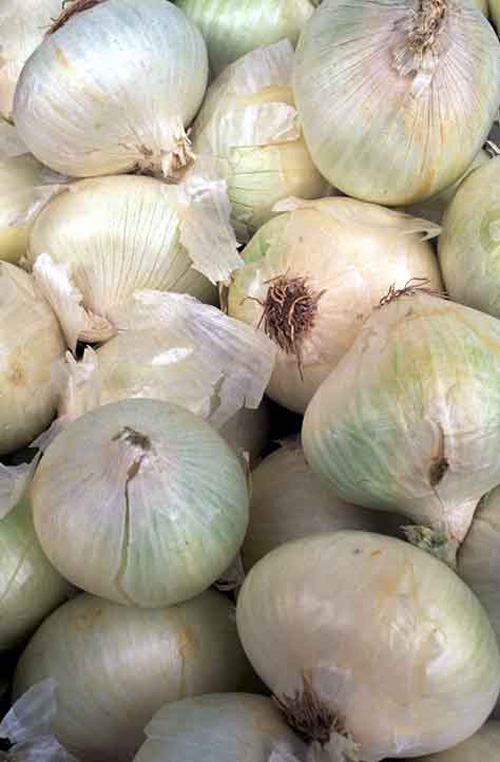Onions
Onions (Allium cepa) are a cool-season biennial crop typically grown as an annual. Dry bulb onions are harvested after the leaves have died back and the bulbs have fully matured. Green bunching onions are harvested while the leaves are still green and before the bulbs have developed. The terms ‘scallion’ and ‘spring onion’ are sometimes incorrectly used interchangeably for green onions. Scallions are onions that completely lack bulb formation, while spring onions have bulbs somewhat more developed than green onions.
Marketing
 Marketing options for Kentucky-grown onions include farmers markets, community supported agriculture (CSA) shares, restaurants, and roadside stands. Wholesaling through produce auctions and to local food retailers is also an option. Onions are sold as green onions, fresh onions and dry (storage) onions. Green onions can be marketed in late spring to lengthen the onion season. According to the USDA, fresh onion use averaged 21 pounds per person from 2004 to 2008. Fresh onion usage declined to 18.5 pounds from 2013 to 2015, likely reflecting lower supply from drought-stricken California. Kentucky producers and local markets reported solid demand for high-quality fresh onions, through the 2016 season.
Marketing options for Kentucky-grown onions include farmers markets, community supported agriculture (CSA) shares, restaurants, and roadside stands. Wholesaling through produce auctions and to local food retailers is also an option. Onions are sold as green onions, fresh onions and dry (storage) onions. Green onions can be marketed in late spring to lengthen the onion season. According to the USDA, fresh onion use averaged 21 pounds per person from 2004 to 2008. Fresh onion usage declined to 18.5 pounds from 2013 to 2015, likely reflecting lower supply from drought-stricken California. Kentucky producers and local markets reported solid demand for high-quality fresh onions, through the 2016 season.
Production
A site located in full sun with well-drained soil is essential for good onion production. Onions prefer a soil high in organic matter with a soil pH between 6.0 and 6.8. Onions can be grown from seeds, sets, or transplants. Most producers rely on either transplants or sets for commercial planting. An onion set is a small, dormant bulb that will produce a larger bulb once it is planted. Onion transplants are started from seed in a greenhouse or in ground beds approximately 12 weeks prior to planting in the field.

